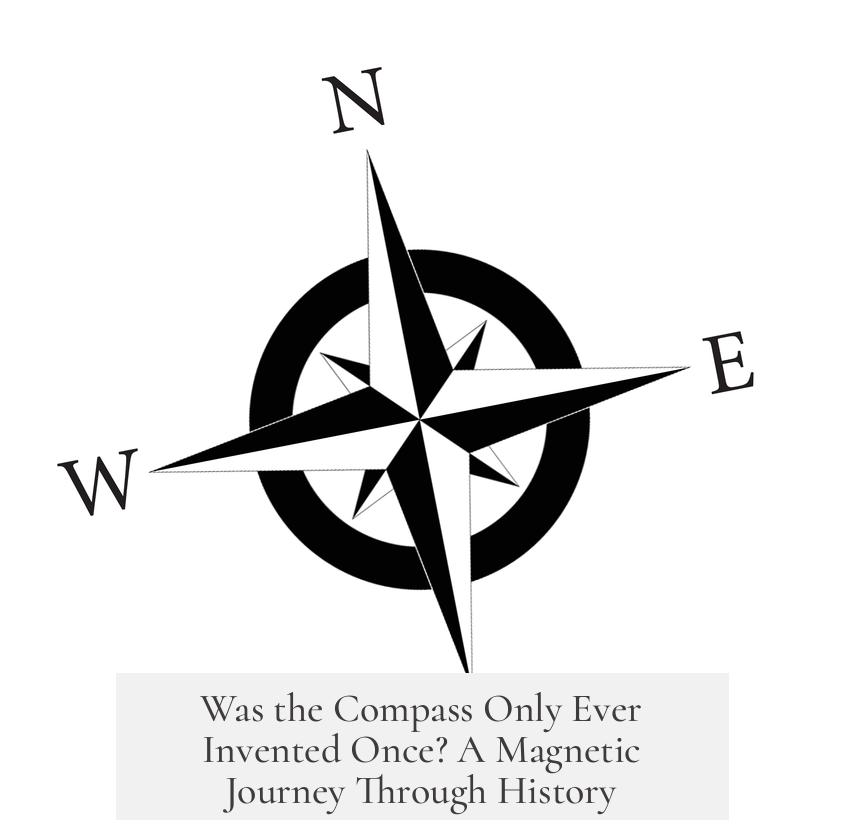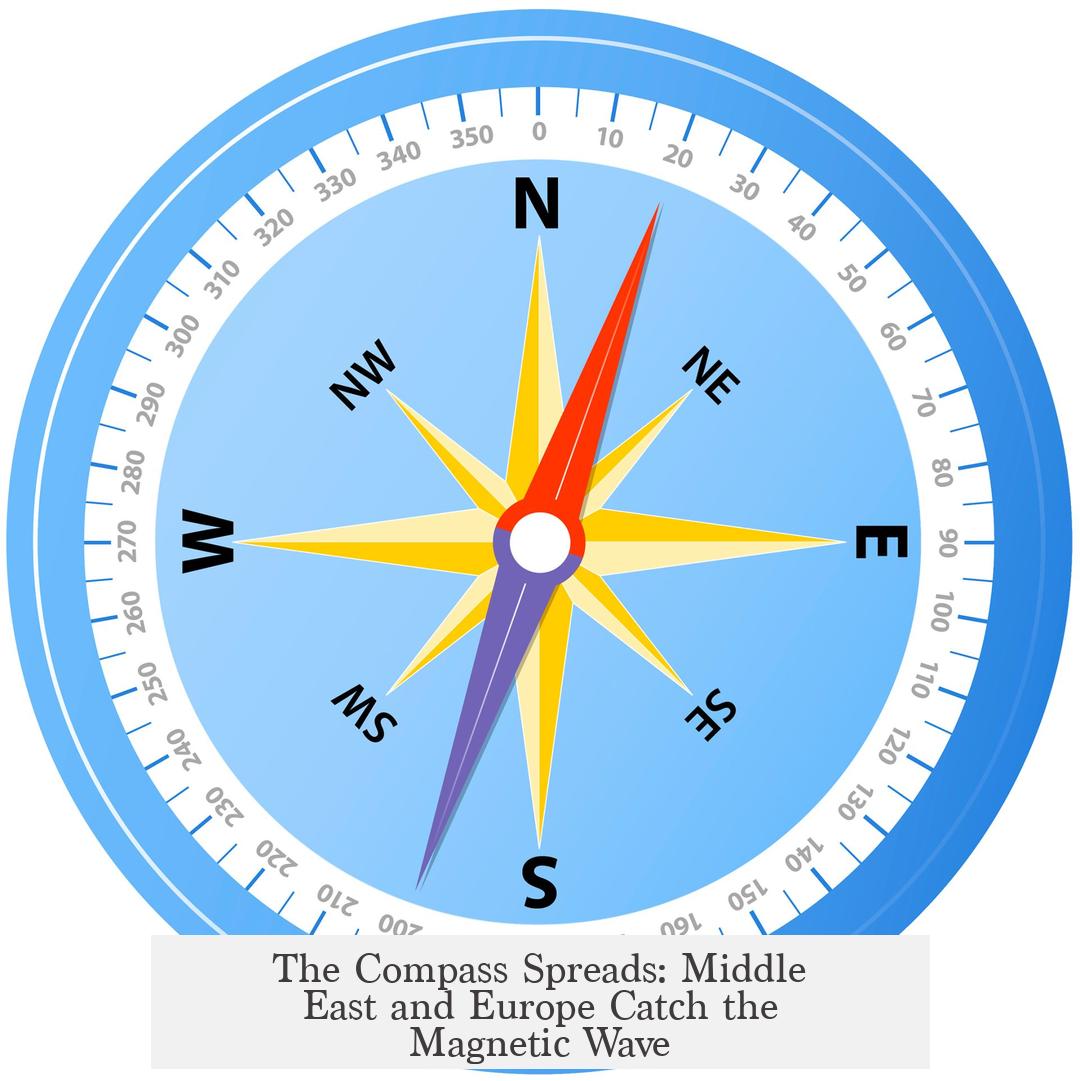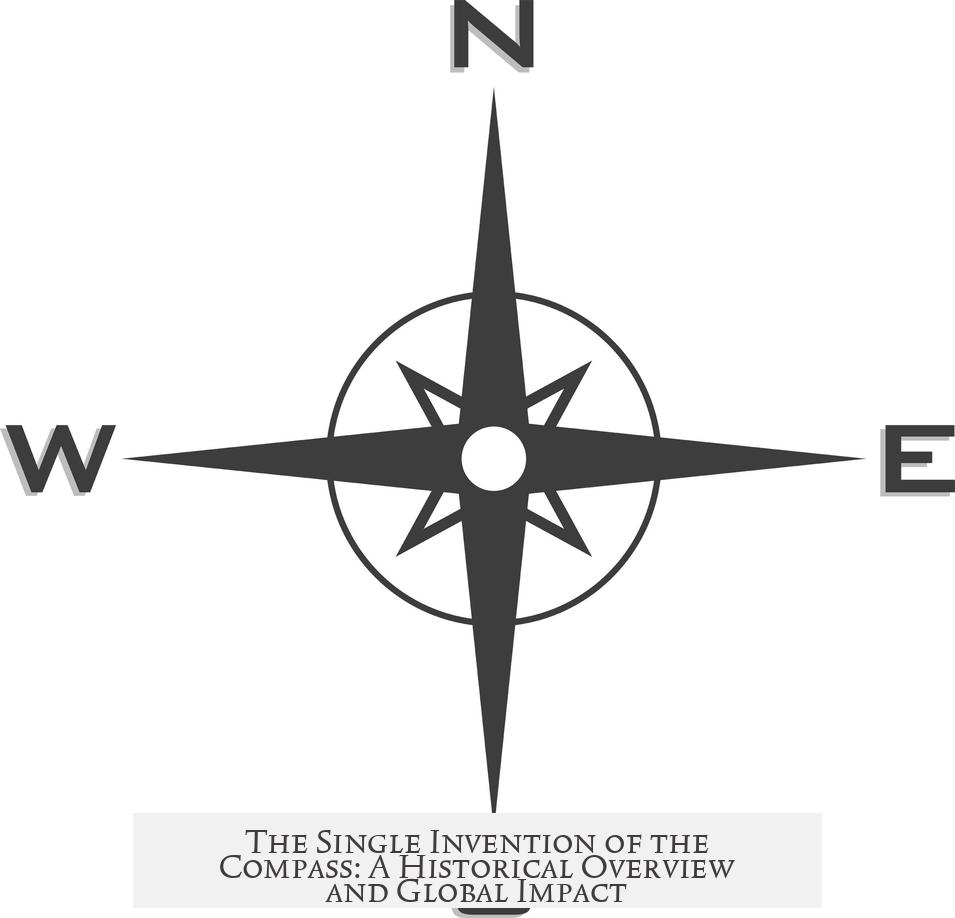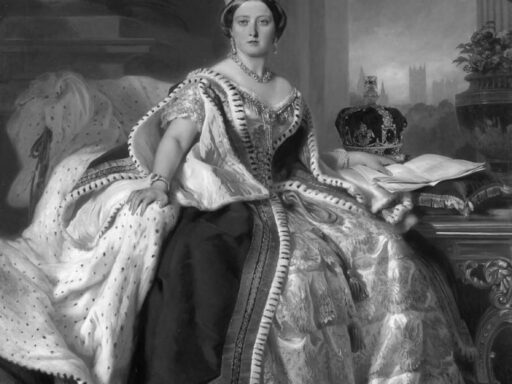The compass was only invented once, with the earliest reliable evidence pointing to its development in China during the 11th century. Although multiple cultures observed the magnetic properties of lodestone, no definitive proof exists for independent compass inventions outside China. The compass then spread through the Middle East to Europe.
Various ancient cultures recognized lodestone’s magnetism. Greeks such as Thales and Democritus referred to lodestone’s ability to move iron. Aristotle mentioned Thales’s view that the lodestone “has a soul” because it moves iron. Lucretius described chains of rings attracted by magnetism. Similarly, Chinese texts like the Huainanzi and Wang Chong’s Lunheng compared lodestone attraction to static electricity. Mesoamerican lodestones were found at Olmec and Mayan sites, but no written evidence shows they understood its magnetic properties.
The key difference lies in the creation of the compass device. While lodestone magnetism was known across cultures, only Song dynasty China features detailed accounts of making navigational compasses. Shen Kuo’s Meng xi bi tan (1088) discussed rubbing needles with lodestones to create pointers aligning roughly to the south. This work also noted magnetic declination—the angle between magnetic north and geographic north—revealing advanced understanding.
Chinese texts describe two main compass types: the dry compass, featuring a needle fixed onto a wooden fish or turtle shape; and the wet compass, which floated an iron fish shape on water. The Wu jing zong yao (1044) describes heating and quenching iron shaped like a fish to produce the wet compass, an early practical navigation tool. Further, the Dong jing meng hua lu (c. 1126) reports sailors relying on the compass during dark or cloudy conditions, underscoring its nautical use.
The compass technology then spread westward. Middle Eastern sources from the late 13th century reference fish-shaped iron compasses strikingly similar to Chinese designs. Muhammad al-Awfi’s Jami al-Hikayat (1283) and Bailak al-Qabajaqi’s Kanz al-Tijar (1282) describe compass use that likely traces back to China. The terminology used in Arabic, such as al-konbas, shows European linguistic influence, indicating a complex transmission path.
Europeans began mentioning compasses toward the late 12th and early 13th centuries. Alexander Neckham’s De Naturis Rerum (1190) recorded the process of magnetizing needles for navigation. Other writers like Guyot de Provins and Jacques de Vitry included compass references shortly afterward. The timing matches adoption following Middle Eastern transmission rather than independent development.
| Region | Historical Evidence | Compass Development |
|---|---|---|
| China | Song dynasty texts (11th–12th century) with detailed compass designs and magnetic declination understanding | Confirmed invention and practical use in navigation, wet and dry compasses |
| Middle East | References in 13th-century texts describing fish-shaped iron compasses similar to Chinese versions | Adoption and adaptation of Chinese compass technology |
| Europe | Late 12th/early 13th-century mentions of magnetized needles used for navigation | Likely received compass technology via Middle Eastern transmission |
| Other regions | Ancient observations of lodestones in Greece and Mesoamerica without compass devices | No evidence of independent compass invention |
The evidence supports a single invention origin in China. Lodestones were known in various early cultures, but these did not lead to a navigational instrument. Chinese innovations led to the compass as a maritime tool, later spreading to the Middle East and Europe. The diffusion path is consistent with historical texts, design similarities, and timing.
This conclusion aligns with the absence of surviving compasses outside China from earlier times and the rich Chinese descriptions of compasses in the Song dynasty. It also explains early medieval Middle Eastern and European compass references as adaptations rather than independent inventions.
- The compass was likely invented once in China during the 11th century Song dynasty.
- Earlier knowledge of lodestone magnetism existed in Greece, China, and Mesoamerica but did not produce compasses.
- Chinese sources describe both wet and dry compasses used for navigation, including magnetic declination understanding.
- Middle Eastern texts from the 13th century reference fish-shaped compasses, showing diffusion from China.
- European compass mentions appear after Chinese and Middle Eastern, likely adopted via cultural transmission.
Was the Compass Only Ever Invented Once? A Magnetic Journey Through History

Yes, the compass as a navigational tool was most likely invented only once — in China during the Song dynasty (11th century). Prior discoveries of lodestone’s magnetic properties in various cultures didn’t spark compass development elsewhere, suggesting a single origin followed by global diffusion.
Now, let’s untangle this magnetic mystery with some facts, stories, and a sprinkle of curiosity.
When Lodestones Cast Their First Magnetic Spell
Long before compasses pointed sailors home, humans noticed lodestone’s odd power. This naturally magnetized rock could pull iron objects toward itself — a magnetic attraction that puzzled minds across continents.
The Greeks, Chinese, and even Mesoamericans spotted this magnetic trick.
Imagine Aristotle’s class discussing a mysterious stone with a “soul” that moves iron. Thales, a Greek thinker from the 6th century BC, supposedly said something like that. Later, thinkers like Democritus and Lucretius wrote about lodestone’s magic charm. Lucretius, a 1st-century poet, marveled at how bits of iron chained together, pulled by this strange rock.
Meanwhile in China, early texts from the 2nd century BCE and 1st century CE noted lodestone’s ability to attract iron but not pottery, hinting at careful observation. Chinese philosophers compared this magnetism to static electricity in amber — both weird invisible forces.
Across the ocean, archaeologists found lodestones in Olmec and Mayan sites dating back 3,000 years or more. But, unfortunately, there’s no evidence these cultures understood lodestones well enough to use them for navigation.
The Chinese Compass: South-Pointing Spoon and Beyond
Here’s where things get fascinating. A Chinese text called Lunheng mentions a “south-pointing spoon” — a lodestone carved like a spoon that always pointed south when placed on a smooth surface. That’s an early hint of compass use, though no physical spoons survive.
The archaeologist Wang Zhenduo proposed in the 1940s that this could be the earliest compass, but skepticism remains without the original artifact.
What we do have — and what really seals the deal — is detailed compass descriptions from the Song dynasty (960–1279). Shen Kuo’s 1088 book Meng xi bi tan describes needles rubbed with lodestone that point south, but with a twist: they incline slightly east, showing an awareness of magnetic declination. Now that’s advanced navigation talk.
Song dynasty texts even detail two compass designs:
- The wet compass, where an iron “fish” floats on water, points south. Mentioned in 1044’s Wu jing zong yao.
- The dry compass, with a needle balanced on a concave wooden turtle, pointing north, described post-1135 in Shi lin guang ji.
By the early 12th century, compasses are already a staple for Chinese sailors, with accounts of navigation on dark, stormy nights relying on these magnetic guides.
The Compass Spreads: Middle East and Europe Catch the Magnetic Wave

Did other regions invent their own compasses? History leans toward “no.” Instead, the compass story expands through diffusion — the passing of ideas from China outward.
Arabic texts from the 13th century confirm compass use in the Middle East. The 1283 Jami al-Hikayat by Muhammad al-Awfi refers to sailors navigating with fish-shaped floating irons — a striking resemblance to China’s wet compass design centuries earlier.
The Arabic word for compass, al-konbas, likely borrowed from Italian, hints at the word traveling alongside the compass itself into Europe.
Europe’s earliest reliable compass references come from the late 12th century.
- Alexander Neckham, in 1190, describes sailors magnetizing needles that spin to point north.
- French poet Guyot de Provins mentions compasses in 1205 satire.
- Jacques de Vitry wrote about them in 1219.
Clearly, Europeans encountered compass technology after the Chinese innovation was well established.
Why Only One Compass Invention? Piecing It All Together
The combination of early lodestone observations without compass development elsewhere and the rich, detailed Chinese compass descriptions points to a single invention in China.
Even though Greeks and Mesoamericans handled lodestones centuries earlier, their failure to create navigational compasses suggests the inspiration for turning magnetism into direction-finding instruments hit only once.
The Middle East and Europe did not invent their own independently but adapted and refined Chinese compass technology through trade and communication.
Think of it like a wizard discovering fire: knowing embers’ warmth is one thing, building a controlled flame is another. Multiple cultures had lodestone embers, but only one sparked a directional fire that guided ships worldwide.
What Does This Mean for Inventions and Innovation?
This compass tale invites us to rethink how inventions travel and evolve. Often, inventions are less about isolated genius and more about the flow of knowledge.
Could a second invention of the compass have just been lost to time? Possible but unlikely given the absence of archaeological or textual evidence outside China.
Another thought: magnetic declination awareness found in Shen Kuo’s work suggests the Chinese didn’t just copy nature; they mastered underlying complexity — a mark of true innovation.
How does knowing the compass was invented once impact us today? It reminds us how a single idea can reshape civilizations. It also shows the importance of cultural exchange in spreading useful technology.
Practical Takeaway for Curious Minds and Navigators

If you’re fascinated by compasses or magnetic science:
- Explore the evolution of magnetic declination — how needle direction shifts due to Earth’s magnetic field variations.
- Compare wet vs dry compasses for hands-on understanding of early navigation tools.
- Consider cultural storytelling about lodestone and qi — ancient attempts to explain nature’s mysteries.
And next time you use your phone’s digital compass, remember the iconic Chinese lodestone spoon pointing true south more than 900 years ago. Every magnetic needle in your life carries echoes of that singular invention.
Final Thoughts
So, was the compass only ever invented once? Yes. The evidence shines brightest on China’s Song dynasty as the birthplace of the compass. Early magnetic curiosities worldwide didn’t crystalize into navigational tools until that moment.
This single invention proved invaluable, spreading globally and steering humanity toward new horizons — literally and figuratively.
Next time you ask a friend for directions, thank the lodestone and ancient Chinese navigators. Without them, you’d probably still be guessing which way is north!




